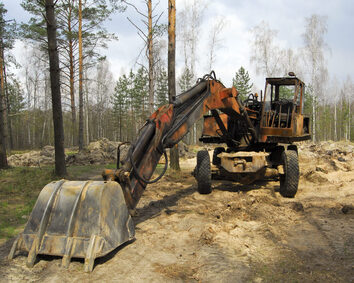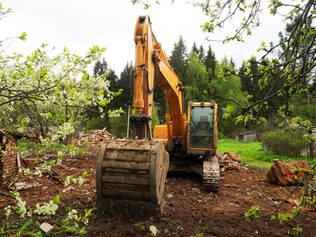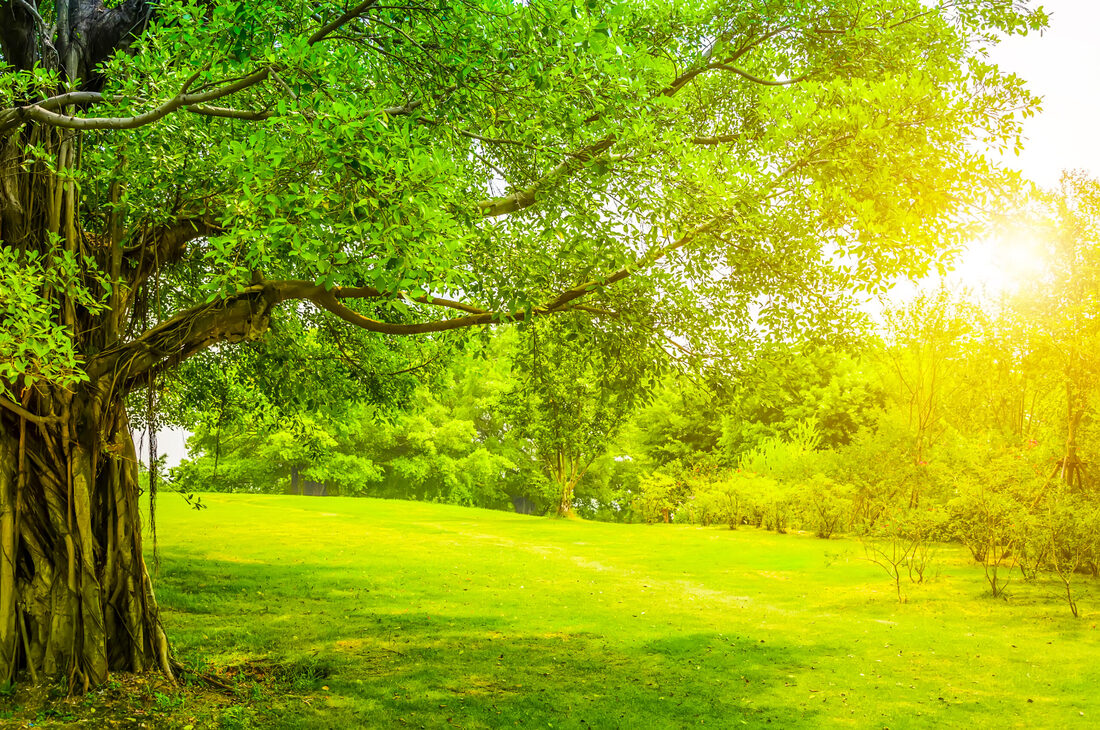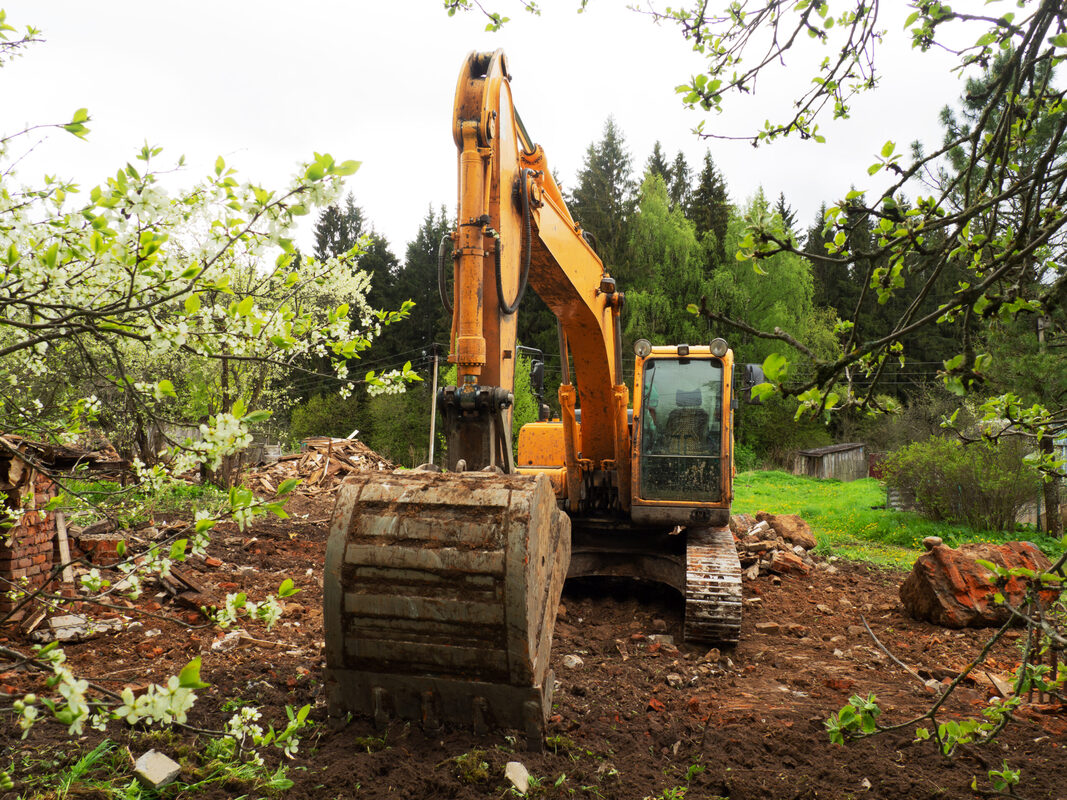 Tree Services professionally maintain your trees Tree Services in Round Rock and Austin TX can help you take care of trees in your environment. Trees are not only majestic features of nature but also crucial components of our environment. They provide us with oxygen, filter pollutants from the air, and contribute to the overall well-being of our ecosystems. Therefore, it's essential to take proper care of trees to ensure their health and longevity. However, there are several myths surrounding tree care that can lead to misinformation and potentially harm these valuable assets. In this article, we'll debunk some of the most common tree care myths to help you better understand how to care for the trees on your property. Myth 1: Trees Should Be Pruned Only in Spring or Summer One of the most prevalent misconceptions about tree care is that pruning should only be done during the spring or summer months. While it's true that these seasons are generally ideal for pruning because trees are actively growing, it doesn't mean that pruning is off-limits during other times of the year. In reality, different types of trees may benefit from pruning at different times of the year. For example, deciduous trees are often pruned during the dormant season, which occurs in late fall or winter when the tree has shed its leaves. Pruning during this time can help promote healthy growth in the spring by removing dead or diseased branches. Additionally, some tree species are best pruned after they have flowered to avoid cutting off potential blooms. Understanding the specific needs of your trees and consulting with a certified arborist can help determine the best time for pruning. Myth 2: Newly Planted Trees Require Regular Staking Many people believe that newly planted trees need to be staked to provide support and stability while they establish roots. While staking may be necessary in certain situations, such as in windy areas or with top-heavy trees, it's not always required and can even be detrimental if done incorrectly. In fact, excessive staking can prevent trees from developing strong root systems and can lead to dependency on the stakes for support. It's essential to assess the individual needs of each tree and only stake when absolutely necessary. When staking is required, it's crucial to use proper techniques and materials to avoid causing damage to the tree. Stakes should be placed outside the root ball and loosely secured to allow for movement, which encourages the tree to develop strength and stability on its own. Myth 3: Topping Trees Helps Them Grow Better Topping, also known as hat-racking or rounding over, is the practice of indiscriminately cutting back large branches to reduce the height or spread of a tree. Some people mistakenly believe that topping trees can help them grow better or control their size, but this couldn't be further from the truth. In reality, topping is extremely harmful to trees and can lead to a host of problems, including:
Instead of topping, proper pruning techniques should be used to selectively remove branches and maintain the tree's natural form and structure. This not only preserves the health and integrity of the tree but also enhances its aesthetic appeal and overall value. Myth 4: Adding Mulch Against the Tree Trunk Causes Harm Mulching around the base of trees is a common practice that offers numerous benefits, such as conserving moisture, suppressing weeds, and improving soil structure. However, there is a misconception that placing mulch directly against the tree trunk can cause harm by promoting disease or rot. In reality, properly applied mulch can protect the tree's trunk and roots from damage and stress. Mulch acts as a buffer against temperature extremes, helps retain moisture in the soil, and reduces competition from weeds and grass. To avoid potential problems, such as moisture buildup and rot, mulch should be applied in a shallow layer (2-4 inches) and kept several inches away from the tree trunk. This allows for proper air circulation and prevents the trunk from becoming overly moist, which can attract pests and promote disease. Additionally, it's important to use organic mulch, such as wood chips or shredded bark, as opposed to inorganic materials like rubber or plastic. Organic mulches break down over time, enriching the soil and providing nutrients to the tree, while inorganic mulches can hinder soil health and drainage. By debunking these common tree care myths, you can better understand how to properly care for the trees on your property and promote their health and longevity. Remember to consult with a certified arborist for expert advice and guidance tailored to your specific trees and landscape. In Part 2 of this article, we'll continue to explore more myths and misconceptions surrounding tree care. Myth 5: Trees Can "Heal" Themselves After Injury It's a common belief that trees have the ability to "heal" themselves after sustaining injuries, such as cuts or wounds from pruning, storms, or other environmental factors. While trees do have mechanisms for compartmentalizing damaged areas and defending against pathogens, they cannot regenerate tissue in the same way that animals do. When a tree is injured, it forms a protective barrier around the wound through a process called compartmentalization. This barrier helps to prevent the spread of decay and pathogens within the tree's vascular system but does not repair the damaged tissue. As a result, the wound will remain visible on the tree for its entire lifespan. Proper pruning techniques can help minimize the size and impact of wounds on trees, but it's essential to understand that pruning cannot undo damage that has already occurred. Prevention is key when it comes to minimizing injury to trees, so it's important to hire trained professionals and practice proper tree care techniques. If you're unsure about how to care for the trees on your property or have questions about tree care practices, don't hesitate to seek guidance from a certified arborist or tree care professional. Their expertise and experience can help you make informed decisions and maintain healthy, beautiful trees for years to come. Work with the best tree Services in Round Rock and Austin TX Leaf Tree Services is your locally owned professional tree service with certified arborists for residential and commercial customers in Round Rock, Austin, and surrounding Central Texas areas. You can trust your trees to us. Contact us today to schedule a consultation, at 512-670-6766.
0 Comments
 Arborist can help maintain the health and aesthetics of your trees Arborists in Round Rock and Austin TX can help you care for your trees professionally. When it comes to maintaining the health and aesthetics of your trees, hiring an arborist is a crucial decision. Trees are valuable assets to your property, providing shade, beauty, and environmental benefits. However, improper care or neglect can lead to their decline or even pose safety hazards. In the sprawling landscapes of Texas, where a diverse range of tree species thrive, choosing the right arborist requires careful consideration. Here are some essential factors to keep in mind: 1. Certification and Credentials: First and foremost, ensure that the arborist you're considering is certified by a reputable organization such as the International Society of Arboriculture (ISA). ISA certification demonstrates that the arborist has the necessary knowledge, skills, and experience to care for trees properly. Additionally, inquire about any relevant licenses and insurance. Texas-specific certifications or memberships in local arboricultural associations can also indicate a commitment to professionalism and ongoing education. 2. Experience and Expertise: Experience matters when it comes to tree care. Look for arborists who have been in the industry for several years and have a track record of successfully handling various tree-related issues. An experienced arborist will be familiar with the local tree species, common diseases and pests, and the best practices for tree care in the Texas climate. They should also have expertise in techniques such as pruning, tree removal, and tree health assessments. 3. Reputation and Reviews: Before hiring an arborist, take the time to research their reputation in the community. Online reviews, testimonials from past clients, and word-of-mouth recommendations can provide valuable insights into the quality of their work and customer service. Look for arborists who have consistently positive feedback and a reputation for professionalism, reliability, and honesty. Avoid hiring anyone with numerous negative reviews or unresolved complaints. 4. Services Offered: Tree care encompasses a wide range of services, from routine maintenance like pruning and fertilization to more specialized tasks like tree risk assessments and emergency storm damage response. Consider your specific needs and make sure the arborist you choose offers the services you require. Ideally, opt for a full-service arborist who can handle all aspects of tree care to ensure comprehensive and integrated management of your trees' health and well-being. 5. Safety Practices: Safety should always be a top priority when hiring an arborist. Inquire about the safety protocols and equipment they use to protect themselves, your property, and the surrounding environment during tree work. A reputable arborist will adhere to industry safety standards and regulations, such as those set forth by the Occupational Safety and Health Administration (OSHA). They should also carry adequate insurance coverage to protect against any potential accidents or damages. 6. Local Knowledge and Understanding: Texas's diverse climate and soil conditions can significantly impact the health and growth of trees. When selecting an arborist, seek someone familiar with the specific environmental factors affecting trees in your region. Local knowledge enables the arborist to recommend appropriate tree species, planting techniques, and care practices tailored to the Texas landscape, ensuring optimal results and longevity for your trees. 7. Transparent Pricing and Contracts: Before engaging an arborist, request a detailed estimate for the proposed work, including all associated costs and potential additional fees. A reputable arborist will provide transparent pricing and clearly outline the scope of services covered in the contract. Be wary of any arborist who offers significantly lower prices than their competitors, as it may indicate subpar workmanship or hidden costs. Review the contract carefully and ensure that both parties agree on the terms and conditions before proceeding. Why Choose Leaf Tree Services in Texas? When it comes to hiring an arborist in Texas, Leaf Tree Services stands out as a top choice for comprehensive tree care solutions. With a commitment to excellence, professionalism, and customer satisfaction, Leaf Tree Services offers a range of specialized services tailored to meet the diverse needs of property owners throughout the Texas area. Here are several compelling reasons why Leaf Tree Services should be your go-to arborist: 1. Expertise and Experience: Leaf Tree Services boasts a team of highly skilled and experienced arborists who possess extensive knowledge of Texas's native tree species, climate conditions, and environmental factors. With years of hands-on experience in tree care, pruning, removal, and maintenance, their arborists are equipped to handle even the most challenging tree-related issues with precision and expertise. 2. Certified Arborists: At Leaf Tree Services, professionalism and qualifications are paramount. Their team includes ISA-certified arborists who have undergone rigorous training and testing to demonstrate their proficiency in arboriculture. This certification ensures that customers receive expert advice and quality tree care services backed by industry best practices and standards. 3. Comprehensive Services: Leaf Tree Services offers a wide range of tree care services to address all aspects of tree management, from routine maintenance to emergency tree removal. Whether you need tree trimming, pruning, stump grinding, tree health assessments, or storm damage cleanup, Leaf Tree Services has the expertise and resources to handle it all efficiently and effectively. 4. Cutting-Edge Equipment and Techniques: To deliver superior results, Leaf Tree Services utilizes state-of-the-art equipment and advanced techniques in tree care and maintenance. From specialized pruning tools to modern tree removal equipment, they employ the latest innovations to ensure safe, efficient, and minimally invasive tree work that prioritizes the health and longevity of your trees. 5. Commitment to Safety and Environmental Responsibility: Leaf Tree Services places a high priority on safety and environmental stewardship in all aspects of their work. Their arborists adhere to strict safety protocols and guidelines to protect both people and property during tree operations. Additionally, they employ eco-friendly practices and strive to minimize waste by recycling tree debris and promoting sustainable tree care practices that contribute to the preservation of Texas's natural beauty. 6. Transparent Pricing and Excellent Customer Service: Leaf Tree Services prides itself on providing transparent pricing and exceptional customer service from start to finish. They offer detailed estimates upfront, ensuring that customers are fully informed about the cost and scope of services before any work begins. Their friendly and knowledgeable staff are always available to answer questions, address concerns, and provide personalized recommendations to meet your specific tree care needs. 7. Positive Reputation and Satisfied Customers: With a strong reputation for quality workmanship, reliability, and professionalism, Leaf Tree Services has earned the trust and loyalty of countless satisfied customers across Texas. Their commitment to excellence and customer satisfaction is reflected in numerous positive reviews and testimonials from homeowners, property managers, and businesses who have experienced firsthand the superior tree care services provided by Leaf Tree Services. In conclusion, Leaf Tree Services stands out as a premier choice for professional tree care in Texas, offering expertise, experience, comprehensive services, state-of-the-art equipment, commitment to safety and environmental responsibility, transparent pricing, and excellent customer service. Whether you need routine tree maintenance or emergency tree removal, you can trust Leaf Tree Services to deliver outstanding results and exceed your expectations every time. Hire the most experienced arborist in Round Rock and Austin TX Leaf Tree Services is your locally owned professional tree service with certified arborists for residential and commercial customers in Round Rock, Austin, and surrounding Central Texas areas. You can trust your trees to us. Contact us today to schedule a consultation, at 512-670-6766.  Land clearing professionals highlight all there is to know about the process Land clearing professionals in Round Rock and Austin TX can help you understand what the land-clearing process entails and what techniques they can use. It is a process that involves the removal of trees, vegetation, and other obstacles from a piece of land to prepare it for various purposes such as agriculture, urban development, infrastructure projects, and more. While it may seem straightforward, land clearing encompasses a range of techniques, considerations, and impacts that are important to understand before initiating any clearing activities. 1.1 Why is Land Clearing Done? There are several reasons it might be necessary:
1.2 Techniques Land clearing can be accomplished using various techniques, depending on factors such as the size of the land, the type of vegetation present, and environmental considerations. Some common methods include:
1.3 Environmental and Social Impacts While it serves various purposes, it can have significant impacts on the environment and communities:
1.4 Regulations and Permitting Due to its potential impacts, land clearing is often subject to regulations and permitting processes imposed by government authorities. These regulations may govern aspects such as the types of activities allowed, environmental safeguards, and consultation requirements with affected communities.
2.1 Sustainable Land Clearing Practices Sustainable land clearing aims to minimize environmental harm and maximize long-term benefits. Some key principles of sustainable land clearing include:
2.2 Mitigation Strategies In addition to adopting sustainable practices, various mitigation strategies can help offset the negative impacts of land clearing:
2.3 Community Engagement and Consultation Effective community engagement and consultation are essential components of responsible land-clearing practices:
2.4 Monitoring and Adaptive Management Monitoring the impacts is crucial for identifying unforeseen environmental impacts and implementing adaptive management measures:
By incorporating these best practices and considerations into land-clearing activities, developers can minimize their environmental footprint, protect valuable ecosystems, and promote sustainable land management for future generations. Hire the best-rated land-clearing professionals in Round Rock and Austin TX Leaf Tree Services is your locally owned professional tree service with certified arborists for residential and commercial customers in Round Rock, Austin, and surrounding Central Texas areas. You can trust your trees to us. Contact us today to schedule a consultation, at 512-670-6766.  Tree maintenance experts explain the dos and don’ts of tree maintenance. Tree maintenance experts in Round Rock and Austin TX can help you understand everything you need to know about maintaining trees. Dos Trees are not only essential for maintaining the ecological balance of our planet but also add beauty and value to our surroundings. Proper tree maintenance is crucial for their health and longevity. Here are some essential dos to keep in mind when it comes to caring for your trees:
Mulching: Mulch around the base of your trees to conserve moisture, suppress weeds, and improve soil quality. Apply a layer of organic mulch, such as wood chips or shredded bark, to a depth of 2-4 inches, leaving a gap between the mulch and the tree trunk to prevent rot.
While there are several actions you should take to maintain healthy trees, there are also certain practices you should avoid. Here are some crucial don'ts to keep in mind:
By following these dos and don'ts of tree maintenance, you can help ensure the health, beauty, and longevity of your trees for years to come. Remember to prioritize proper care, regular inspection, and prompt action to address any issues that arise. With the right approach, you can enjoy the many benefits that trees provide while minimizing potential risks and challenges. Tree Maintenance Experts: How They Can Help Tree maintenance experts, such as certified arborists or tree care specialists, play a crucial role in ensuring the health and vitality of your trees. These professionals possess the knowledge, experience, and specialized equipment necessary to diagnose tree problems accurately and implement effective solutions. From routine pruning and fertilization to tree removal and emergency storm damage response, tree care experts offer a range of services tailored to your specific needs. By enlisting the assistance of these professionals, you can benefit from expert guidance, personalized care, and peace of mind knowing that your trees are in capable hands. Work with the best tree maintenance experts in Round Rock and Austin TX Leaf Tree Services is your locally owned professional tree service with certified arborists for residential and commercial customers in Round Rock, Austin and surrounding Central Texas areas. You can trust your trees to us. Contact us today to schedule a consultation, 512-670-6766.  Why is Tree Maintenance Significant for Aesthetic Appeal and Beyond? Tree maintenance in Austin, TX transforms your property’s narrative with trees acting as nature’s exclamation points. They amplify visual intrigue, introduce a rejuvenating counterbalance to urban landscapes, and elevate an everyday area into an exceptional sanctuary. However, surpassing their aesthetic role, trees extend an array of practical advantages, including:
How do professionals ensure my trees maintain their optimal appearance? Maintaining the optimal appearance of your trees involves a delicate balance of expertise, techniques, and a genuine passion for nature. When you entrust the care of your trees to professionals, you’re setting the stage for a visually stunning and healthy landscape. Here’s how they work their magic:
Is hiring professionals worth it? When it comes to the care of your cherished trees, it’s natural to wonder if bringing in the professionals is truly worth the investment. Let’s dig into why enlisting the expertise of certified arborists is a decision that pays off:
Locating Top Tree Maintenance in Austin, TX When seeking top-tier tree care in Austin, TX, the key takeaway is the enduring impact of professional expertise. The care of your trees goes beyond aesthetics; it’s a holistic approach that nurtures the health of your environment and community. By partnering with experts like Leaf Tree Services, you’re not just enhancing the beauty of your property; you’re making an investment in the long-term vitality of Austin’s lush landscape. As you embark on your journey to find the best tree maintenance service, consider the expertise and dedication offered by Leaf Tree Services. Their commitment to quality, sustainable practices, and a thriving urban ecosystem make them a remarkable choice for those who appreciate the art and science of tree care. With their assistance, your trees will flourish, your property will stand out, and the natural allure of Austin, TX will continue to captivate all who call it home. Leaf Tree Services is your locally owned professional tree service for residential and commercial customers in Austin and surrounding areas. You can trust your trees to us. Contact us today to schedule a consultation, 512-670-6766.  What exactly is land clearing, and why do we need it? Land clearing in Austin TX, is the process of removing vegetation, debris, and obstacles from a piece of land to prepare it for various purposes, such as agriculture, construction, or development. It’s necessary because it provides a clean canvas for new projects and maximizes the land’s potential. Land clearing isn’t just about cutting down trees or removing rocks. It involves comprehensive planning, safety measures, and environmental considerations to ensure a sustainable outcome. Is land clearing environmentally friendly? Yes, it can be! Sustainable land clearing practices are essential to protect the environment while meeting our agricultural and food production needs.
How is land clearing impacting Austin’s landscape? Land clearing is playing a significant role in shaping Austin’s future, especially in terms of agriculture and food production. Here’s how:
What methods are employed for land clearing? There are several methods for land clearing, each suitable for specific situations:
What positive impacts does land clearing bring to the local community? Land clearing has several positive impacts on the local community, and here are some key points to consider:
Are there regulations in place to oversee land clearing activities? Let’s dive deeper into the regulations overseeing land clearing activities:
How does land clearing support Austin’s urban development? Let’s explore how land clearing supports Austin’s urban development:
How does land clearing affect local wildlife habitats? Let’s delve into how land clearing affects local wildlife habitats in a conversational manner:
Can land clearing help address the issue of food deserts? Yes, it can play a part in combating food deserts:
Exploring the Ultimate Land Clearing Services in Austin, TX As we wrap up our quest for the ultimate land clearing services in Austin, TX, it’s clear that Leaf Tree Services stands out as a noteworthy contender in this field. Their dedication to responsible and sustainable land clearing practices aligns seamlessly with Austin’s commitment to preserving its natural beauty while accommodating growth. Leaf Tree Services showcases a genuine understanding of the delicate balance between development and conservation. They embrace eco-friendly methods and ensure minimal disruption to local ecosystems during land clearing projects. What sets Leaf Tree Services apart is their commitment to community engagement. They actively involve local residents and environmental enthusiasts in their projects, fostering a sense of collective responsibility toward Austin’s ecological well-being. This approach not only ensures the preservation of critical habitats but also encourages sustainable growth within the community. Leaf Tree Services is your locally owned professional tree service for residential and commercial customers in Austin and surrounding areas. You can trust your trees to us. Contact us today to schedule a consultation, 512-670-6766. |
Leaf Tree ServicesLocally owned full service professional tree care serving residential and commercial customers in Austin and surrounding areas for over 20 years. Archives
June 2024
Categories
All
|

 RSS Feed
RSS Feed
